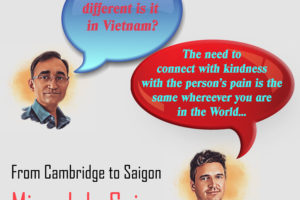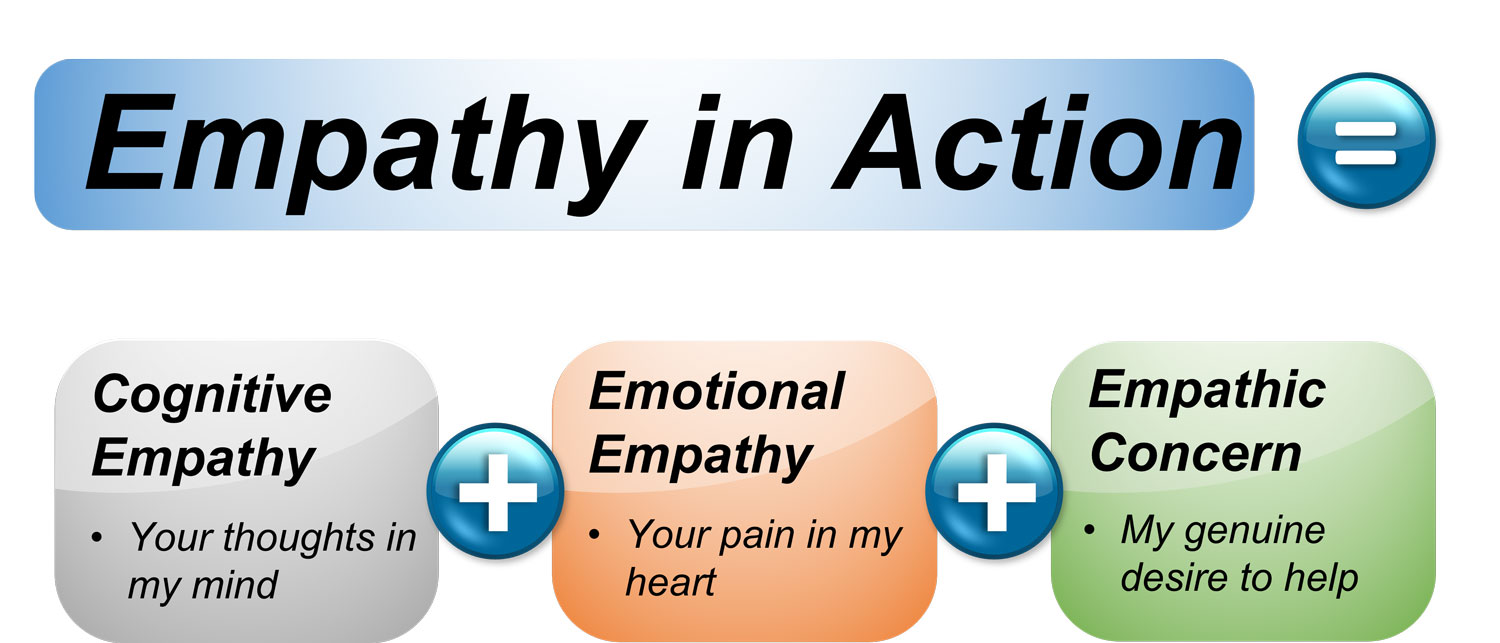
09 | Empathy in Action II – Equation of Empathy
- Posted by Manaan Kar Ray
- Categories Weekly PROTECT Podcast
- Date March 5, 2022
VALUES OF RELATIONAL SAFETY
Host: Good day, I am Mahi, your host, this is episode 9, part 2 of Empathy in Action, the final chapter in the CORE module. In episode 8 we talked about the key mindset shift which lies at the foundation of relational safety, a shift from Top to Tap, Manaan will you please remind our listeners about what this shift is from top to tap?
Expert: Top to Tap is a key mindset shift. Traditionally professionals have been at the top, the professional is the seat of all knowledge and expertise and has the responsibility to fix the problem, namely the person in suicidal distress, tap refers to a true partnership where the professional’s expertise is matched by the person’s lived experience and both work together towards safety and recovery. This shift from top to tap underlies the practice change from deficits focus to a recovery oriented assets focus. Working from the top, the professional attempts to establish what’s the matter with you, in terms of practice change to that of being on tap, the professional attempts to establish what matters to you, that is often at the seat of the psychological pain as well as hope for the future.
Host: You also used quite a catchy phrase “paperwork for proper work”, can you put that into context of Empathy in Action?
Expert: Each of the CORE chapters examines a delicate balancing act, Empathy in Action explores Form vs Function. The word form can be interpreted as the structure or the process that is followed in an assessment or a treatment session or even quite literally as the forms that are filled in as part of risk screening or triage or monitoring. Often the interaction degenerates into a mechanistic exercise of form filling that meets the professional’s need to gather data but does not meet the person’s to need to be heard and for their pain to be validated. In such a situation form filling has got in the way of one of the key functions of the interaction, to build relational safety.
Host: But isn’t paperwork important too, cause time and time again we hear that if it is not documented it has not been done.
Expert: Paperwork is important, but if it gets in the way of proper work, the empathic connection that needs to be established to bolster safety, something has to change. A good rule of the thumb is to check how long one is spending with the person and how long one is on a computer doing the paperwork. If the latter is more than the former, then in all probability the professional is focused more on form filling than the function the form was meant to serve in terms of guiding an empathic conversation not a Spanish inquisition. We will have in-depth discussions regarding this in the ASSESS module for the time being remember why we want the mindset shift from Top to Tap, to create relational safety and we should not let forms or paperwork get in the way of the function of proper work, a genuine human connection.
Host: You can find more details of the three modules of PROTECT, CORE, ASSESS and ASPIRE at www.progress.guide, there are video courses on the website, the transcripts and media are available on the blog or in the PROTECT Guidebook which is available on Amazon. Remember to follow the podcast and share it with your colleagues. Today we are going to dive deeper into mindsets and explore the values that lie at the foundation of Empathy in Action. Manaan let’s begin – what are values?
Expert: There are many definitions, but the one that I like the most is from Acceptance and Commitment Therapy and is used by Russ Harris. Values embody the qualities we want to bring to our actions (Harris 2019).
Host: The qualities we want to bring to our actions?
Expert: Yes, it is “the being” that precedes “the doing”.
Host: Clearly in Empathy in Action, the term action relates to the doing, where do the values fit in.
Expert: Our listeners will remember in Optimise Pain Relief, we described the interest and need for pain relief that underlies the suicidal position. For the pain relief dialogue to be valid, the professional has to dive deep and see the world from the person’s point of view. This attempt to walk in the person’s shoes is what we describe as empathy in action. There is a strong temptation to take control, maybe even engage in a power struggle, act from the top, but to allay that temptation and just to be present, truly present and walk alongside the person is a values guided action.
Host: The concept does seem quite abstract, it may be easier to understand if you mentioned the values that are involved.
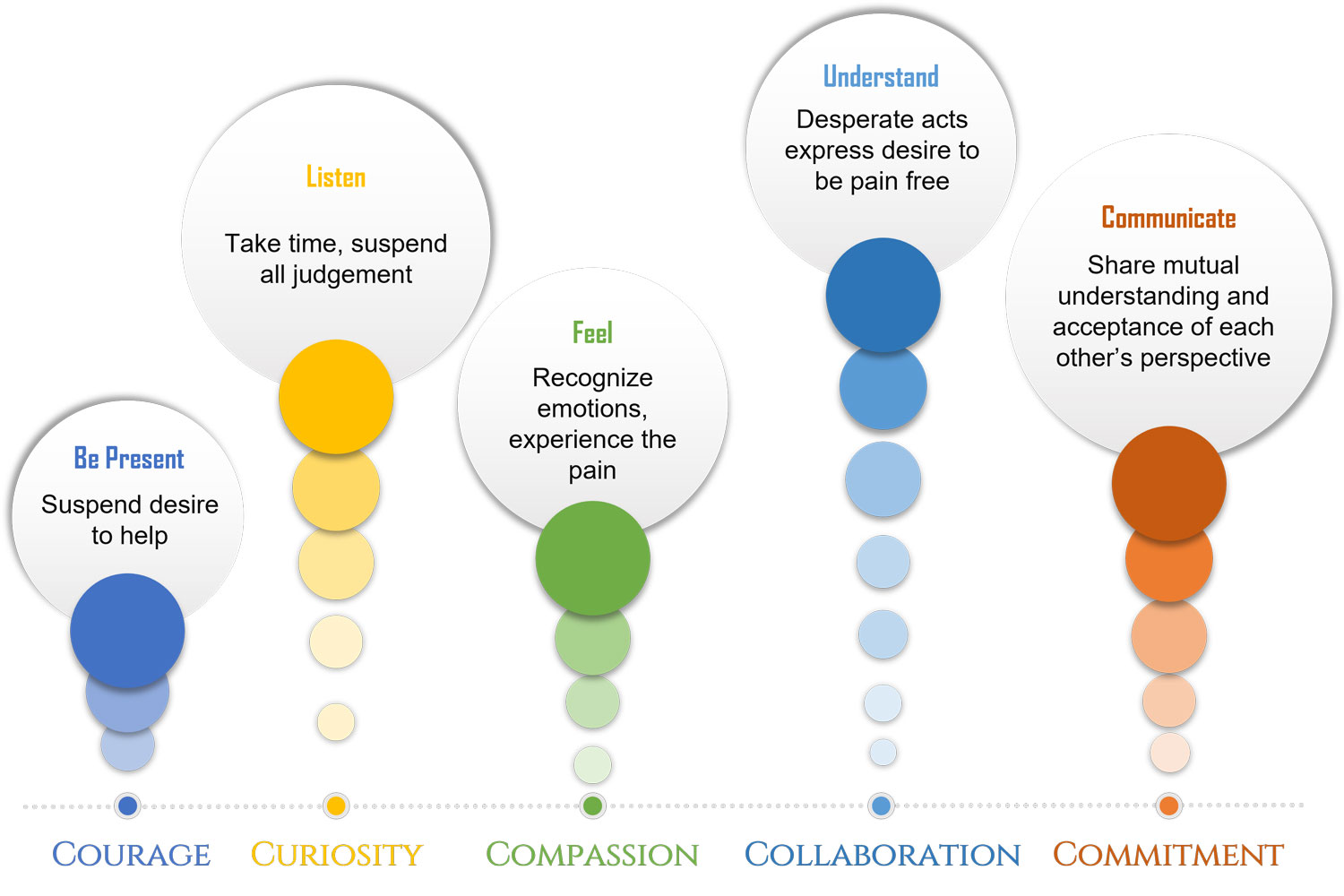
Expert: Yes it is a bit abstract, so let’s pin the values down. Constructing relational safety in the moment is a process that is embedded in 5 core values:
- Courage: to be present and suspend the desire to help
- Curiosity: in taking the time to listen and recognizing reasons and emotions
- Compassion: in sharing the person’s darkness without judgement
- Commitment: to reframe suicidal thoughts and acts as a desire to be pain-free
- Collaboration: to coproduce the journey ahead based on mutual respect
Host: Courage, curiosity, compassion, commitment and collaboration, the 5 values of relational safety. I can see how these values can help us enact the learnings from the 2nd chapter of the CORE module, Optimise Pain Relief.
Expert: That is spot on, you will remember me highlighting that when working with a person in suicidal distress, it is imperative that clinicians do not expect automatic compliance or compromise in the death orientation. This exposes a mindset of ‘what’s the matter with you’ and whatever it is ‘I will fix you.’ Instead of trying to pull patients over to the professional’s worldview, a genuine attempt has to be made to role model the values of relational safety. The goal is to establish what matters to the person, as in it lies the clues to pain relief. Professionals have to be ready to journey a while, navigating inclement weather and emerging storms while continuously drawing on the lived expertise of the person. This value set will help the shift from being ‘on top’ to being ‘on tap’.
Host: It sounds to me that the values are a way for the professional to role model all that they want the person in distress to enact or do.
Expert: Yes, the professional’s role modelling or being supports the doing by the person. Courage to share and feel the person’s darkness will often be reciprocated with the courage to tolerate the pain longer. The person in suicidal distress wants to escape entrapment and is crying out to be psychologically pain-free. Genuine curiosity to understand and acknowledge the position of death in terms of their interests and needs will engender curiosity about alternatives to suicide. When the professional follows this up by framing actions, contemplated or taken, with true compassion as pain guided desperate measures, they lay the foundation for self-compassion in the person and values guide committed actions. Commitment to take time, suspend judgement and even the desire to help and just be present will often result in a commitment to therapeutic options. In our clinical practice, we have found that spending time, sometimes in supportive silence (Hill et al. 2003, Ladany et al., 2004), is a prerequisite to successfully communicating that the professional has an emerging sense of why death feels better than a life of pain. This gift of time often buys time for a trial of treatment or at a later stage for treatment to take effect. These values, when enacted setup the stage for a collaborative venture, one in which a safe journey with practical solutions is coproduced (Egan 2013).
Host: The values underpin the proposal to optimise pain relief. Courage, curiosity, compassion, commitment and collaboration validates the pain
Expert: Yes, validates the pain and calms the agitated, suicidal mind long enough for a conversation about alternative solutions. Relational safety attempts to construct the eye of the storm, just a long enough calm for the person to realize they now have a navigator by their side to support them for the rest of the storm. The navigator has the same destination in mind – to be pain-free, just that the alternative path is slower and longer.
Host: In the next episode we will spend more time on each of these 5 values, but let’s begin to internalise these values by going over what you just said, the concept of values in the professional, being mirrored in the actions of the person in distress, is a tricky one to grasp. So No 1. Courage, Be Present
Expert: Courage to share and feel the person’s darkness will often be reciprocated with the courage to tolerate the psychological pain longer. Suspend the desire to jump in and help and just be present. ‘Being’ trumps ‘Doing.’
Host: No 2. Curiosity, Listen with Fascination
Expert: Curiosity to understand and acknowledge the position of death in terms of the person’s desire to be pain-free will engender curiosity about alternatives to suicide. Suspend all judgement and take time to listen with full attention.
Host: No 3 Compassion, Your Pain in My Heart
Expert: When the professional follows up their curiosity with a reframe of actions, contemplated or taken, with true compassion as pain guided desperate measures, they lay the foundation for self-compassion in the person.
Host: No 4. Commitment, Promise of Recovery
Expert: Commitment to take time, suspend judgement and just being present will often result in a commitment to therapeutic options. Through gentle persuasion and the promise of recovery, help the person see that recovery is a reality. Things will get better and soon.
Host: No 5. Collaboration, Partner up
Expert: Enacting these values will set up a collaborative venture, one in which a safe empowering journey is coproduced. A partnership based on mutual respect quells power struggles and helps the person in distress realise that the goal to be pain free is shared.
Appreciative Curiosity: values to Action
Empathy in Action
Host: If this still feels abstract, do not worry. As mentioned earlier in the next episode we will spend time looking at each of these values in detail and how they translate into everyday clinical practice, for the time being Manaan can you provide an initial link between the values and actions.
Expert: Living the values constructs empathy in action. There are 3 specific components, cognitive empathy – I think I have gained a sense of how you are thinking – your thoughts in my mind; emotional empathy – I feel what you are going through – your pain in my heart and, finally, empathic concern – the genuine desire to help someone in their hour of distress. What the values help us do is to create this multifaceted understanding of the person in distress, the attempt to understand and connect at this level provides a safety scaffolding far stronger than any form filling exercise one can engage in. Knowing that a fellow human being gets how I am thinking, feeling and has a genuine desire to help is healing in its own right.
The 5 Rs
Host: I know in the PROTECT Guidebook you write about values guided committed actions, can you tell us more about the specific actions which convey cognitive empathy, emotional empathy and empathic concern?
Expert: In Collaborative Assessment and Management of Suicidality (CAMS), Jobes (2006) recommends certain helpful messages from the professional. These have been organized in line with values of relational safety into a sequence of five key actions; Reassure, Reaffirm, Reframe, Refocus, Rediscover, this is what is now renowned as the pain relief dialogue. The sequence of actions is centred on messages aimed at gaining engagement in the assessment process. If the person feels understood in the context of pain and the desire to be pain-free, they will be more open and candid in the conversation relating to how close they have come to the precipice of death.
Host: And if they are open in the assessment, that will then inform crisis navigation using tools like the care compass.
Expert: Yes, the professional, the person in distress, their family can all participate as equal partners to balance risk and recovery, care and control. Developing confidence in living the values of relational safety in clinical practice takes time and patience. The learning pit may prove challenging as showing courage and being present in the person’s darkness is not easy.
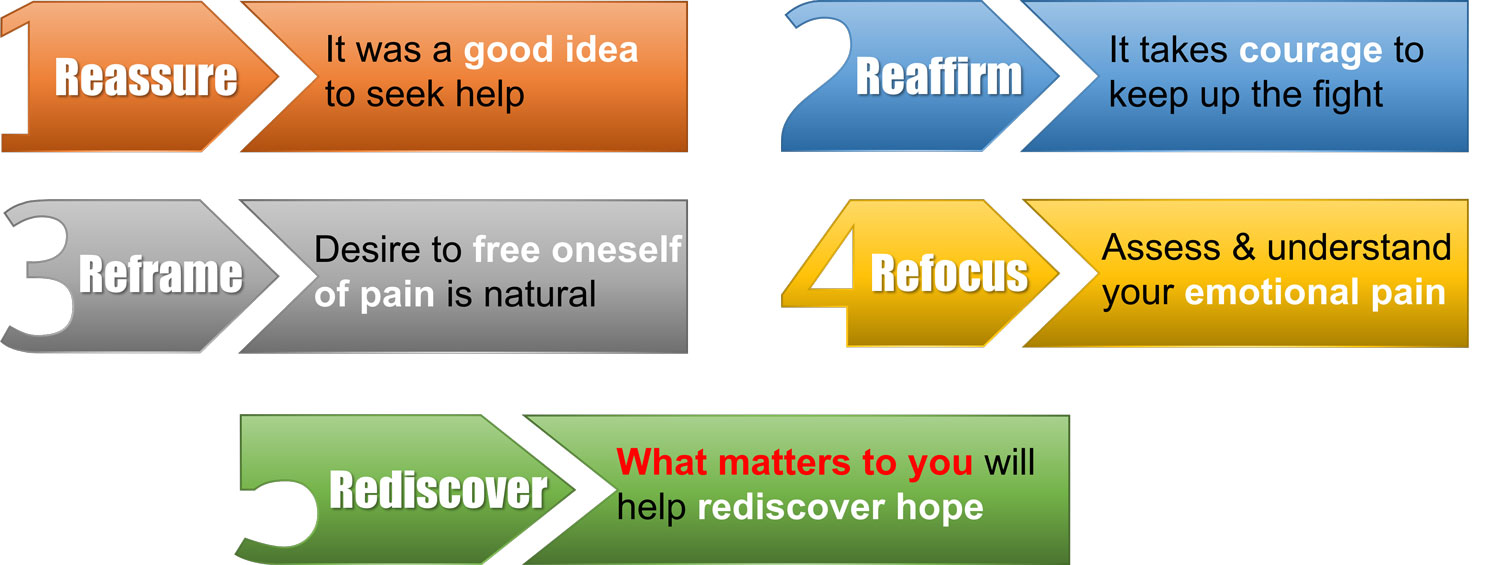
Host: Tell us more about the pain relief dialogue
Expert: It is actually written as a monologue but does make way for a lot of dialogue. We have constructed the pain relief script using the five actions that I mentioned, it makes clinical practice more tangible. Although the values underlie the actions, we believe it is easier to bring progress to practice through the actions i.e., learn to take actions that reflect the values.
Host: Is the hope that in time the words and the values they reflect become second nature?
Expert: Yes, the script takes less than a minute so it can be said in every assessment. Repeatedly practising it in the clinical setting will not only advance learning but will provide the foundation of relational safety for the journey ahead.
Host: To recap the 5 actions are Reassure, Reaffirm, Reframe, Refocus, Rediscover, can we go through each one of them. I will read they by-lines from the book the first action is Reassure the Good idea
Expert: Reassure it was a good idea to seek help. Assessments can be arduous and bring to the surface painful emotions. A simple reassurance goes a long way to allay anxiety and engage the person in recounting their narrative.
Host: Reaffirm their Profound pain
Expert: Reaffirm their profound emotional suffering and intense pain. Empathic validation creates an atmosphere of openness and candour and protects against people withholding their true suicidal intent.
Host: Reframe it as an Understandable response
Expert: Reframe suicide as an understandable response to the magnitude of the pain. Normalising suicidality in the context of overwhelming life circumstances can help work out what is it that truly matters to them.
Host: Refocus the Assessment as one of pain
Expert: Refocus the assessment and management dialogue as an attempt to understand and mitigate their pain and suffering. From an engagement point of view, this is a far better approach. Diagnostic clarification will occur in time.
Host: Rediscover What matters
Expert: Rediscover with the person what matters to them so that together a course for pain relief can be charted. From ‘what is the matter with you’ to ‘what matters to you’ is a critical mindset shift to establish deep empathy.
Host: In your face to face training you run a speed dating session where students say the words to different participants 10 times, it’s one of the most cited activity in terms of what students retain and the one commitment they make to practice change.
Expert: Well practice makes perfect, the words to begin with feel awkward, cause people are not used to saying such things and even if they do in not a structured way, but by the 5th or 6th time, they develop a degree of fluency, we recommend in the early days to stick to the words, as they get confident, they can innovate and change things around.
Host: Ok, time to hear the words in the pain relief dialogue.
Expert:
- Talking about this is very difficult. It brings all the pain to the surface, but it was a good idea to seek help; doing this by yourself is incredibly difficult.
- I am not in your shoes, but I can see your profound pain. Hopefully, working together will make it a little bit easier. It does take courage to keep up the fight.
- Who wouldn’t have the desire to try and free themselves of the pain? It is an understandable response to what you are going through.
- I am hopeful that by working together, we can both gain a full and thorough understanding of your emotional pain.
- In my experience, what matters to you will be at the source of the pain. If I can get a sense of that, we can begin to chip away at it or improve your tolerance to it. Together we will rediscover hope.
Host: The words are beautiful and they end with an explicit promise of recovery. In training sessions you often say that these 40 seconds is the most impactful gift of words you can give to a person in suicidal distress
Expert: Yes, they have been tried and tested, in the guidebook the words are there on page 42. You can easily see which of the 5 actions Reassure, Reaffirm, Reframe, Refocus, Rediscover relate to which phrase or which sentence. It is ok to change the words and adapt it to your clinical practice, contextualise it to your culture and setting, but we do recommend not to miss the key words, the words which are there in bold on page 42.
Host: This brings us to the end of episode 9, part 2 of Empathy in Action. In the next episode, part 3 of Empathy in Action we will consider each of the 5 values courage, curiosity, compassion, collaboration and commitment in detail, we will attempt to translate the values further into actions and practice change, bringing to life relational safety. You can access all the information at www.progress.guide. We would love to hear your thoughts, you can connect with Manaan on Linked in, or follow our LinkedIn page by searching on LinkedIn for progress.guide, you can email us at admin@progress.guide. We are also on Twitter and YouTube. As usual please do follow the podcast, there will be weekly episodes every Friday and share it with your colleagues. Today you have learnt about the equation of empathy in action, which equates to cognitive empathy + emotional empathy + empathic concern. We have introduced you to the values of empathy in action and provided the words of the pain relief dialogue. Providing healthcare professionals contemporary knowledge about how to connect and create relational safety is crucial in suicide prevention. Remember together we can and we will rediscover hope. You can be a hope vector and spread this knowledge at your work. Thank you for joining us today and keep translating empathy into tangible action.
You may also like

19 | Creep Crash Crawl
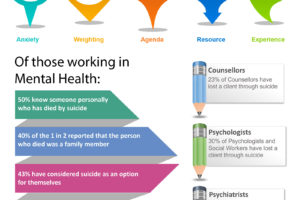
18 | AWARE 5 – Experience
